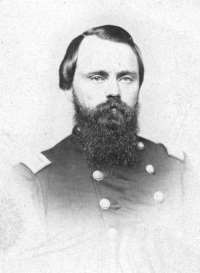Mine Creek Battlefield
-Union Cavalry Charge-
You should be able to see Trail Marker 4 off in the distance south of where you are standing. Just follow the trail straight ahead (south) to the next marker.
Looking South from Tour Stop 4
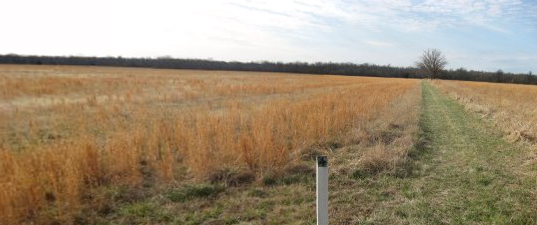
Maj. Gen. John S. Marmaduke, supported by Maj. Gen. James F. Fagan, did deploy his forces to defend against cavalry charge. When cavalry attacks, they do so at a relatively narrow point in the enemy lines. Their objective is to break through the enemy line and then continue the attack in the enemy’s rear. But Marmaduke did not have an effective reserve force to counteract a successful break in their lines by the attacking Federal cavalry. Marmaduke was somewhat constrained because the wagon train had still not gotten completely across Mine Creek.
Because of the impact on the battle's outcome, let's take a moment to discuss how the Federal cavalrymen were armed. Remember that most of the Confederates were armed with single shot muzzle-loading rifles, not particularly well-suited for mounted cavalrymen. Col. John F. Philips' Brigade was armed with the 15-shot repeating Henry Rifle and each man also carried a revolver. All the men in Lt. Col. Frederick W. Benteen's Brigade were armed with the 7-shot repeating Spencer Carbine, a revolver and a saber. The arms of Benteen's Brigade were particularly well suited for a cavalry charge. The arms of the men in Philips' Brigade gave them overwhelming fire power against the Confederates. They would end up supporting the initial charge by Benteen with this fire power.
As soon as he arrived on the field of battle, Benteen realized the Confederates were in a difficult situation with their backs to Mine Creek. He quickly decided an all-out immediate charge was the correct move. He formed to the left of the Fort Scott Road in a column of four regiments across a 400 yard front.
- 10th Missouri Cavalry was first
- 4th Iowa Cavalry was second
- 3d Iowa Cavalry was third
- 7th Indiana Cavalry and 4th Missouri Cavalry combined were fourth
Benteen sent a message to Philips asking him to support his attack and began his charge in a south-southwesterly direction.
Philips' Brigade moved out to support the attack. There had been a 300—400 yard gap between the Federal brigades to begin with, but this disappeared because both brigades charged at an angle and closed the gap. There were 2,500 cavalrymen charging straight at the Confederate lines. This may well have been the largest cavalry charge of the entire war. The Confederate artillery was firing canister at the charging Federals. When they were within 300 yards of the Confederates, Benteen called out for the buglers to sound charge. You are standing near where the Federal charge began.
Lt. Col. Frederick W. Benteen described the events leading up to the cavalry charge.
I at once determined to form on the left of this [Philips] brigade, especially as a few more paces brought us in view of the line of rebels; seeing the position in which he had his artillery, I immediately surmised that the rebel commander had committed a fatal blunder, and resolved to capture it. I sent an officer to the commanding officer of the brigade on my right with the information that I was going to charge, and a request for him to charge with me, for God's sake, and at the same time formed my command in column of regiments … and immediately sounded the charge.
However, about 100 yards into the charge the Federal 10th Missouri Cavalry in Benteen's Brigade stopped the charge out of fear. Of course, this caused the charging regiments behind them to stop causing a lot of disorganization in the Federal lines. Benteen was screaming at them to continue the charge. At this point, Philips' Brigade also stopped charging about 300 yards from the enemy. They dismounted and began firing at the Confederates. At this point, the Confederates could have turned the tables on the Federals, but they were not advancing.
Maj. Gen. John S. Marmaduke
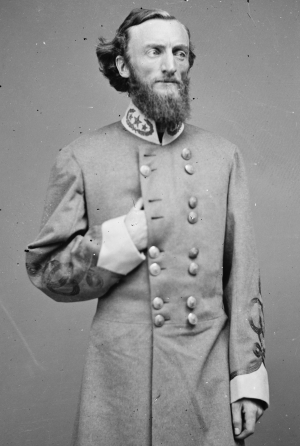
Maj. Gen. James F. Fagan
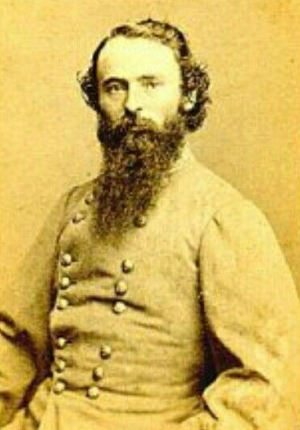
Lt. Col. Frederick W. Benteen
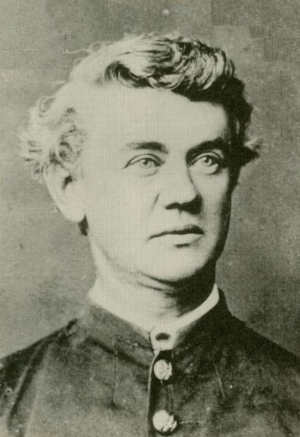
Col. John F. Philips
